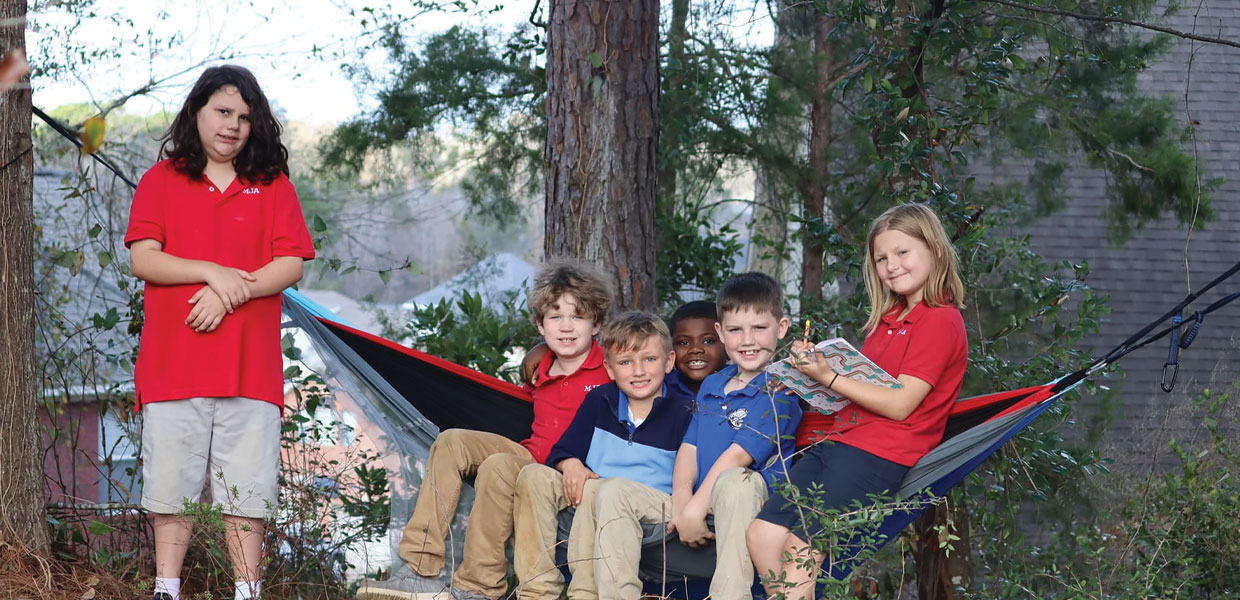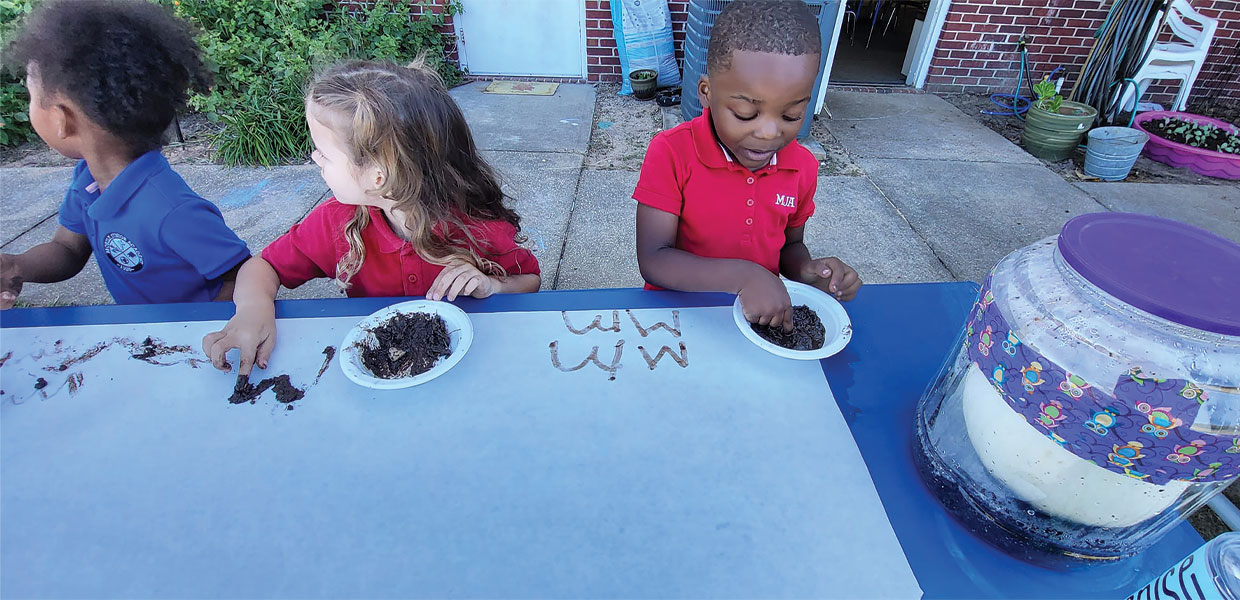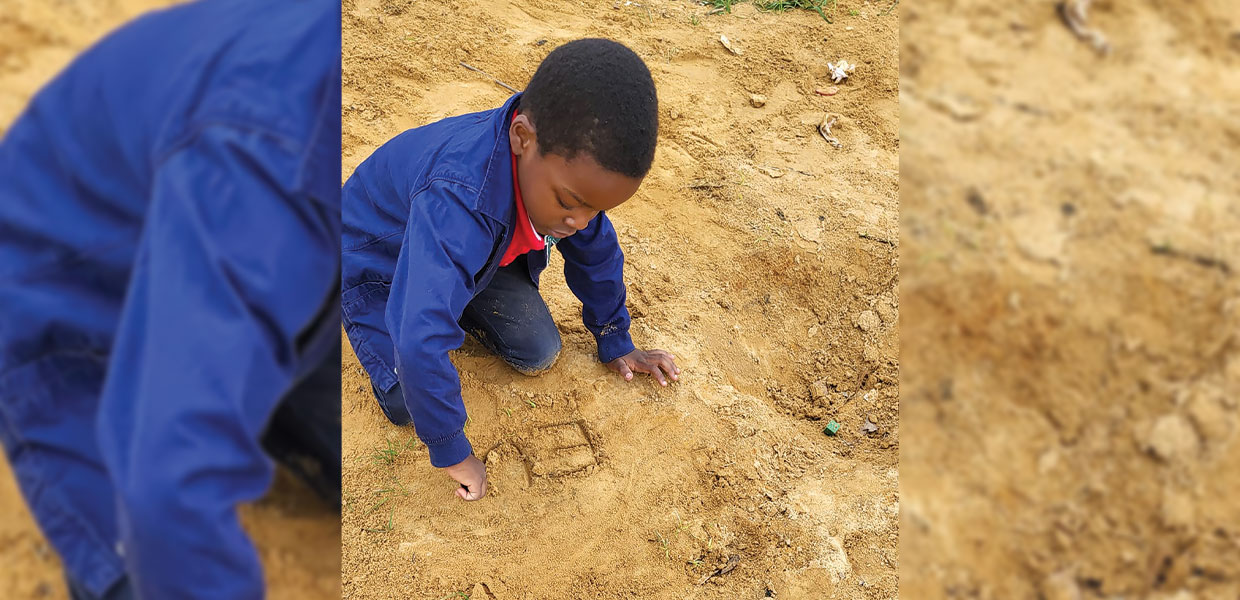


Many years ago, I came across an article about Forest School. Forest School is an educational approach that takes place in natural outdoor settings, typically forests or woodlands. It focuses on hands-on learning experiences and allows children to engage with nature and the environment. Forest School emphasizes child-led activities, exploration, and play, fostering their curiosity, independence, and connection with nature. It also promotes skills such as problem- solving, teamwork, resilience, and environmental awareness. I was intrigued by the idea. I also wondered how the students were able to learn the core subjects like reading and math while exploring outdoors.
Last school year, Mobile Junior Academy’s pre-kindergarten through fourth grade started experiencing a taste of Forest School. Although the school does not have a huge forest, there is plenty of outdoor space for exploring and learning about this beautiful world God created for us. The students still had traditional learning in the classroom but with extra time outdoors. Some days, lessons were even taught outside. People have often asked, “How do you teach outdoors?” My answer is simple. Instead of using manipulatives in the traditional classroom, use items from nature instead. For example, in a kindergarten math lesson, counting can be taught using natural objects such as sticks, rocks, flowers, and leaves. These items can also be used for sorting, matching, and many other math-related activities. These same items can be used in reading and writing lessons. My students created the letters of the alphabet using pine needles, sticks, and sand.
My favorite lesson was one of our Bible lessons. We were learning about how hard life must have been for the Israelite slaves. The students were able to experience firsthand how to make a brick. We used a small plastic pool and filled it with sandy dirt. Then, the students had to collect tall grass from all over the field. They were not allowed to use scissors or tools to make the job easier either. Last, they had to carry buckets of water to mix it all together. Their favorite part was mixing it. They took off their shoes, rolled up their pant legs, and used their bare feet to mix it all together. One boy told me this was the first time he had ever played in mud. The joy on his face was contagious!
I have to admit I was a little skeptical about the whole idea at first. I felt like I wasn’t “teaching” my students enough. As I assessed my students’ progress periodically, I was amazed at how much they were retaining. The growth I witnessed in all of my students was amazing. We observed growth in cognitive, social, language, and emotional development. The biggest growth observed was a greater spiritual connection with God.
The last thing that I noticed throughout the school year was behavior. At the beginning of the year, I had one particularly challenging student. As the year progressed, they became more and more eager to please. By the end of the year, their challenging behaviors were almost completely gone. I will take some credit for this, but time being able to explore outdoors was a tremendous help.
This year, students are more enthusiastic about generating new ideas for outdoor exploration. When I show students a new concept and ask what should we do to learn more, I can see the lightbulbs going off as they think of ways to approach new ideas. When a problem arises, they come to the teachers less and less to help resolve it. As the school year progresses, I am excited to witness the growth and learning of our students in this beautiful world God created.
Gulf States | October 2023



Comments are closed.